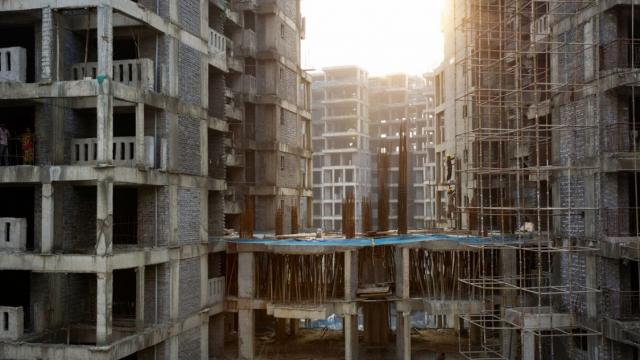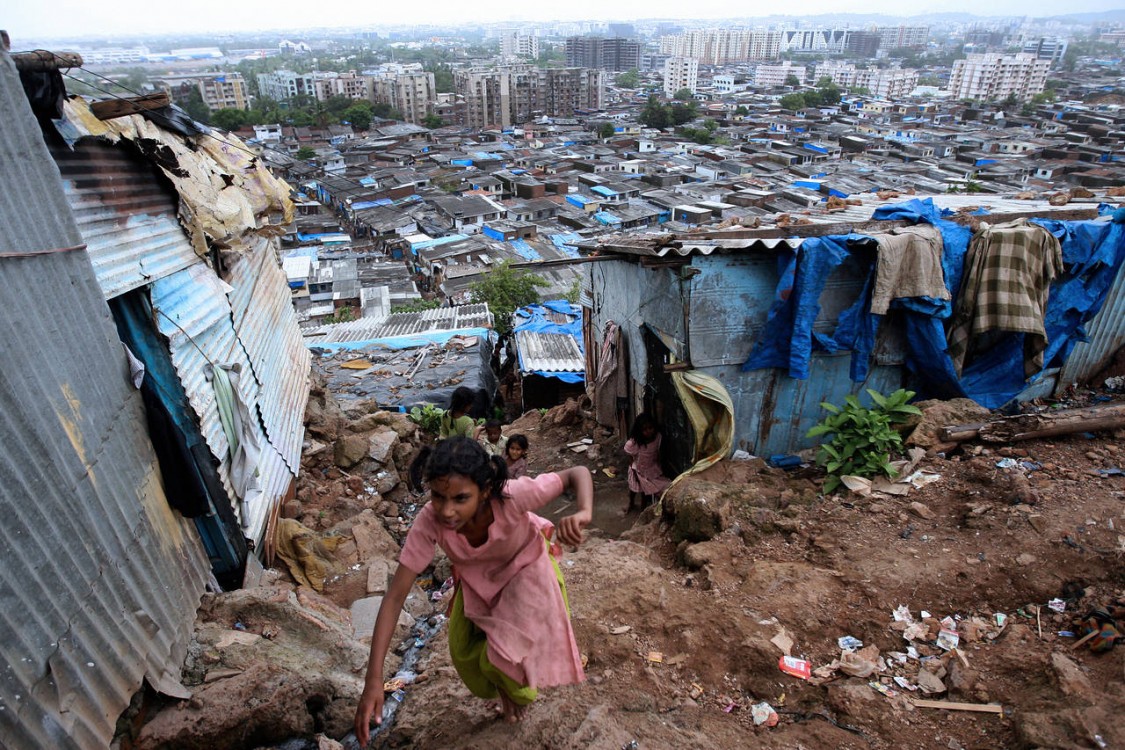
This is Part 21 in a series about Radical Municipalism looking at ways people worldwide are organizing in their cities to build power from the bottom up. Read Part 1 (Brazil), Part 2 (Rojava), Part 3 (Chiapas), Part 4 (Warsaw), Part 5 (Bologna), Part 6 (Jackson, Miss.), Part 7 (Athens), Part 8 (Warsaw & New York), Part 9 (Reykjavík), Part 10 (Rosario, Argentina), Part 11 (Newham, UK), Part 12 (Valparaiso, Chile), Part 13 (Porto Alegre, Brazil), Part 14 (Montevideo, Uruguay), Part 15 (Venezuela), Part 16 (Cape Town), and Part 17 (Congo), Part 18 (Jemna, Tunisia), Part 19 (Gdansk, Poland), and Part 20 (Senegal).
For over six years, farmers living near cities in Gujarat state, in western India, have protested against being swallowed into those same cities. The state wants 12 cities to consume no less than 800 villages.
This trend threatens villagers' livelihood, and farmers are expected to give up 40 percent of their land so that the rest rises in value. But there are claims of a land grab. Owning less land, of course, makes agriculture harder. Urban sprawl depletes the water table and pollution increases.
After large protests in 2015, 42 villages fought to be removed from the state's expansion of cities. But most are being destroyedregardless. The plans were initiated by Narendra Modi, head of Gujarat state government from 2001 to 2014, after which he became the nation's prime minister.
Moving toward a world of megacities?
Gujarat reflects a global urbanization trend. While there are positive reasons for moving to cities, coercion is more often the driver. Extractive industries also push people from the land, alongside enclosures and destruction of the commons.
Indigenous communities have faced the worst consequences, marked by genocide and disease. Recently, these processes have been accelerated by industrialized war on the environment and its aftermath, such as land mine destruction and habitat loss. Multinational corporations drive new waves of colonial land grabs, not least in the realm of agribusiness, as climate change pushes millions more from their land.
By 2050, the UN expects 68 percent of people globally to be city dwellers. up from 55 percent today and 29 percent in 1950.
Asian and African cities are growing the fastest, especially in India and Nigeria. Today, India has 5 megacities, going by the UN definition of cities with 10 million-plus populations. At 27 million, India's capital New Delhi is the second largest city in the world after Tokyo – but in 2028 it is due to surpass Japan's capital. Estimates suggest half of New Delhi's population lives in cramped and poor quality housing – otherwise called 'slums', although the word is problematic as it reinforces a power dynamic whereby authorities don't value the residents in these neighborhoods.
Poor neighborhoods surrounding most megacities often lack basic amenities. Overcrowding or proximity to rubbish dumps causes disease and fires. Worse still, in Delhi the last few years have seen devastating fires that the residents suspect were started deliberately by authorities, in the form of so-called “slum clearances.”
"Rights to a megacity?”
The "Rights to the City" concept is useful to challenge authorities and elites in their attempts to prescribe solutions for these precarious areas. As Part 4 of this series discussed, these rights include accessing basic necessities such as clean air, decent homes, running water and other living essentials. Beyond that, RTTC means that people who were by and large forced into cities should have the right to shape their environment.
Across India many social movements are working from the very base of the economy upwards. This form of organizing often goes overlooked within the growing radical municipalist movement, which tends to focus on Europe, North America and South America. But municipalist galvanizing from India's most precarious populations is hardly new.
In 1970, a focal point became the authorities' aim to clear Janata Colony in Mumbai city. Locals, including Jockin Arputham, argued, “No eviction without alternative.” Over 1,000 settlements around the city joined in the fight, and through peaceful guerrilla tactics, civil disobedience and court orders, the movement began to frustrate the authorities.
The effort went national, and later global, as the Shack/Slum Dwellers International (SDI). It lost the battle – Janata in the end was demolished – but altered the war. In "slum-clearances" afterwards, Indian authorities were expected to offer alternatives. But as the suspected arson in New Delhi shows, contempt for the urban poor continues.
Against this background, bottom-up organizing continues to develop across India, driving authorities to upgrade or protect what they deem precarious areas. For instance, in Ahmedabad, Gujarat's largest city, women community leaders have galvanized the community to upgrade the Jadibanagar settlement with amenities including water taps, toilets and paved paths, as well as a 10-year guarantee of no evictions.
In Odisha state, in eastern India, 200,000 precarious homes were also given official status, lifting any eviction threat. This was pushed by bottom-up housing rights groups including the Bhubaneswar Basti Basinda Mahasangha (BBBM), which welcomed the state's move, but added: "The government has yet to properly identify all slum dwellers ... so not all the urban poor will benefit." As part of its 2015 campaign, BBBM held large sit-ins with a focus on meditation, known as Dharanas, outside the state governor's house.
Tearing down stereotypes is another means to help protect residents' rights. A striking form of this has been carried out by Chal Rang De (Let’s Go Paint), a non-profit association that paints colorful murals across the precarious settlements of Mumbai.
In Mumbai's southeast, the Dharavi settlement is recognizable as the setting for "Slumdog Millionaire," a film strongly criticized for pushing the stereotype of India's slums. But one project here is working with the community to map the value of the densely populated settlement. From an outsider's perspective, the housing might seem chaotic, but the project shows how this informal development is created with full community involvement to house a wealth of social and cultural support networks in a limited space. The way Dharavi develops from the bottom-up has been mapped by Urbz, which calls itself "an experimental action and research collective."
This is not about romanticizing Dharavi. Like many precarious settlements, the area needs running water, sanitation, paved roads and other infrastructural improvements. But as many have voiced, the zone should not be destroyed to put people in tower blocks or other top-down planned residential units. From a Rights to the City perspective, destroying this "homegrown city" would smash their rights to build the city – rights the residents already exercised despite their status at the bottom of the social ladder.
Prime Minister Modi started another front in the battle over India's cities in 2015 with plans to establish 100 Smart Cites by 2022. The project was sold as bringing "housing for all, comprehensive public transport, green spaces, walkable streets, dependable water, electricity and internet connectivity, and citizen-friendly governance." But by 2018, only five smart cities have been built. Worse still, the project is providing a glossy facade to intensify attacks on "homegrown settlements."
Globally, the Smart City narrative is now being criticized for creating top-down cities that are ideal for suppressing human rights, as they rely on extensive surveillance. Instead of smart cities, therefore, we need to think about smart citizens. In megacities the most precarious have already exercised their right to create home-grown communities. But to fulfill all their rights to the city, residents' key needs are access to amenities – and the simple right to remain.
Read more: Part 1 (Brazil), Part 2 (Rojava), Part 3 (Chiapas), Part 4 (Warsaw), Part 5 (Bologna), Part 6 (Jackson, Miss.), Part 7 (Athens), Part 8 (Warsaw & New York), Part 9 (Reykjavík), Part 10 (Rosario, Argentina), Part 11 (Newham, UK), Part 12 (Valparaiso, Chile), Part 13 (Porto Alegre, Brazil), Part 14 (Montevideo, Uruguay), Part 15 (Venezuela), Part 16 (Cape Town), and Part 17 (Congo), Part 18 (Jemna, Tunisia), Part 19 (Gdansk, Poland), and Part 20 (Senegal)












